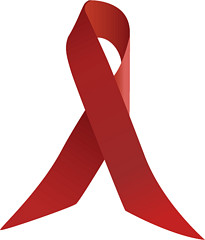Right after confirming the pregnancy through a blood test or beta HCG as recommended by your doctor, the obstetrician will order the first prenatal tests, among them to check for possible HIV in pregnancy. All these tests are extremely important to assess the mother’s health conditions and thereby provide support and monitoring for healthy fetal development.
If HIV in pregnancy is discovered early, a specific treatment will be administered and the chances of the baby being born with the virus will drastically drop. During pregnancy, the disease progresses faster, and if medication is not started, there is a 20% chance that the baby will acquire the virus through pregnancy, childbirth, or even breastfeeding. During pregnancy, the virus can be transmitted through the placenta, during delivery through contact with contaminated blood and fluids, and through breastfeeding, as the milk is produced in a body already infected by the virus.
Another very important point that calls for stricter monitoring in the case of HIV in pregnancy is the fact that HIV-positive women are more likely to experience complications throughout their pregnancy due to their weakened immune system. Preterm birth, miscarriage, and impaired fetal growth are risks faced in this type of pregnancy.
How Is HIV in Pregnancy Treated?
Once HIV in pregnancy is detected, the obstetrician will refer the patient to a consultation with an infectious disease specialist who should work together with the obstetrician to monitor the pregnancy. Additional tests will be required to confirm the presence of the virus and to check the viral load and CD4 cell count in the blood—these cells are responsible for the body’s defense. Based on these tests, treatment will be recommended, usually involving the medication AZT to reduce the chances of transmitting HIV to the fetus. For women who are already aware they have the virus and become pregnant, they should not stop taking their medications, as discontinuing treatment makes the virus even more resistant—so the infectious disease specialist should be notified immediately for further guidance.
In some cases, the infectious disease doctor may recommend starting treatment only in the second trimester of pregnancy, depending on the mother’s health and immunity. In the second trimester, the fetus’s main organs have already formed and will not be exposed to the medication. At delivery, the medication should be administered intravenously around 3 to 4 hours before birth. In most cases of HIV in pregnancy, cesarean section is recommended to reduce the risk of contaminating the baby, since during vaginal delivery, the exchange of fluids between mother and baby is unavoidable when the water breaks. Other precautions include avoiding vaginal exams, episiotomy, and not inducing labor or using forceps in these cases, as these are not advised.
The medication AZT is given to the baby immediately after birth and must be continued for six weeks, at which point a test will be done to confirm or rule out transmission of the virus. After two weeks, it is already reliable to test if the virus is active, but the result will only be 100% certain after a few months, once the antibodies passed from the mother have left the child’s system. Regarding breastfeeding, both the obstetrician and the infectious disease doctor monitoring the pregnancy should instruct the mother not to breastfeed her baby. This follows the official recommendation of the Ministry of Health, advising replacement with formula. In the maternity hospital, the use of medication to suppress breast milk production will be recommended.
See also: High-Risk Pregnancy – Which Cases Are Considered?
Photo: Trygve Utstumo, Thirteen Of Clubs











